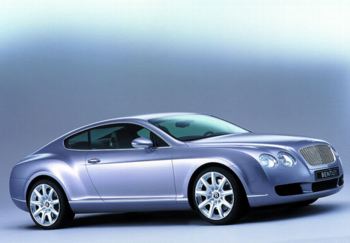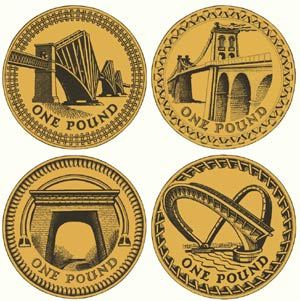We are developing the social individualist meta-context for the future. From the very serious to the extremely frivolous... lets see what is on the mind of the Samizdata people.
Samizdata, derived from Samizdat /n. - a system of clandestine publication of banned literature in the USSR [Russ.,= self-publishing house]
|
Blogging is unpredictable. It began as innocent posting by me about the Segway, which is a sort of mobile Zimmer frame, on Transport Blog.
Then Patrick Crozier, presiding boss of Transport Blog, made this rather more profound comment.
I have no idea whether the Segway is a good idea or not. But it strikes me as one in a long list of good ideas eg. bikes, roller skates, the C5, which might have been the answer to all sorts of our problems had it only been possible to give them the right sort of road space.
Take roller skates. Small, fast, relatively easy to learn. They should be fantastic. Lots of people should be using them. Why aren’t they? Because if you skate on the pavement you are constantly bumping into people and if you skate on the road you get run over (if not arrested).
But what if you had dedicated roller skate lanes or even dedicated roller skate highways? Different story – perhaps.
Incidentally, this is one of the most compelling reasons (I think) to want a free market in transport – because if entrepreneurs could do their own thing we might actually find out what forms of transport were actually (given all the factors) the best. We certainly aren’t going to find out so long as the state runs the show.
From the ridiculous to the sublime. → Continue reading: David Sucher on the necessity of states to contrive and maintain “infrastructure”
Kevin Connors talks about a certain British civil servant with a licence to kill, er, drive
Bond purists know that there are only two ‘proper’ cars for 007 to drive, an Aston or a Bentley. But for many years, while the British auto industry decayed, neither Aston or Bentley produced anything James would be caught dead in (book readers might recall Gardner gave him a Mulsanne Turbo in 1984). But over the last decade, the British Car business has been undergoing a renaissance, riding a wave of American and German capital and technology. The fruits of this are really starting to come now. Two years ago, Aston Martin (now owned by Ford) introduced their beautiful V12 Vanquish, seen in last year’s Die Another Day. But still, relative to the breathtaking Ferrari 575M Maranello, it’s only real competition, most automotive commentators declared it an also-ran. (While the comparison is far closer than that of the classic DB5, introduced in Goldfinger, and the 1964 Ferrari 500 Superfast, to say nothing of the incomparable 250GTO. Even the Lamborghini 350GT and Maserati 3500 GT, would likely have cleaned the DB5’s clock.)
Now, all that is behind us. After many teases, Bentley Motor Cars, (now owned by Volkswagen) is finally releasing their latest masterpiece, the Bentley Continental GT:

It has no competition.
This 4 passenger, 5000lb, W-12, AWD monster does 0-60 in 4.7 seconds, the same as a Porsche Carrera. It tops out at 198 mph, faster than all but a handful of 2 seat super-exotics. All this while coddling the passengers in the lap of luxury.
With plenty of room for Q to hide toys, this is a car Commander Bond would love. Of course, the next car 007 actually drives will be determined by the real world consideration of how much the manufacturers are willing to pony up in product placement money. And, although the producers know the fans want to see Bond in a British car (and not a plastic toy Lotus, even if it does go underwater), If Toyota forked over enough, James might be driving the new Supra.
BUT WAIT!
There’s a new player on the scene
I didn’t consider this at first, because of the leading name on the moniker. However, on further consideration, there’s likely more actual British engineering and manufacturing content in this than the Bentley. Ladies and gentleman, coming in about six months, I give you the revolutionary Mercedes-Benz SLR McLaren:

As opposed to the Bentley’s porcine two and a half ton mass, carbon composite construction helps keep the SLR to a svelte one and three-quarters. This, along with slightly greater horsepower (580, not 605 as stated on spec. sheet), shave a full second off the Bentley’s 0-60 time. Top speed is 211 mph. A handful of currently available automobiles are in the performance league with the SLR: the Lamborghini Murcielago (also VW, btw), the Pagani Zonda C12-S 7.2, the Ferrari Enzo, and the Saleen S7. But all these are, to one degree or another, racing cars for the street. The SLR promises to be the first super-exotic that’s also a viable daily driver.
Of course, the SLR costs (before Q-izing) two or three times the price of the Bentley. But, to Her Majesty’s Government, it’s just chump change seeing as they have all those taxpayers to call on.
Our Revered Leader Perry de Havilland has been telling us in conversation that our postings here are better than they were in the early days of this blog. I’m sure I hope so, and I believe that something similar may also apply to David Farrer over at Freedom and Whisky.
His latest posting is a particularly choice item, based on an equally choice story in the Sunday Herald, about a potential collision between ramblers in Scotland and trains in Scotland, caused by an actual collision between “Right to Roam” legislation and the decision to bring charges of Corporate Manslaughter against six of Britain’s railway ex-bosses for an earlier prang.
The railway infrastructure has been taken out of the hands of shareholders and into the safekeeping of selfless (sic) public servants. Surely this kind of mix-up shouldn’t occur. Don’t tell me that there’s something wrong with socialism! In the meantime the local council is forcing open the gates over the tracks and Network Rail is locking them up again.
The folk at Network Rail are – wisely – looking out for number one:
“If people are serious about crossing live railways, the safest way is by underpass or bridge and somebody has to fund that – and it’s not going to be the railway because it’s not our responsibility. The responsibility must either rest with councils or central government.”
Dave Fordwych, the Sunday Herald man, thinks both policies are foolishness, but David has the answer to the problem:
I think that a solution may be found if the Secretary of State for Transport, Alistair Darling, has a quiet word with the Secretary of State for Scotland who is, er, Alistair Darling.
And I thought that Rod Liddle, in his recent Spectator piece about the Kelly Affair had been joking about …
… the day that Tony Blair announced his embarrassing and botched Cabinet reshuffle, the one where people suddenly found out that they were simultaneously Secretary of State for Transport and Scotland.
David adds a personal recollection to the effect that Darling seems inclined already towards talking to himself.
Funnily enough, the only time I have ever seen Mr Darling, my own MP, was on an aeroplane flying from London to Edinburgh and, yes, he was talking to himself.
“Joined up government” is what David calls his posting. You can’t get much more joined up than this. But, it doesn’t seem to be working very well.
Nothing surprises me about this shower of idiots, collectively known as the UK government, but sometimes their crass shamelessness still manages to astonish me. After six years of adding nothing to the UK road network, other than the insane pink Kremlin lane, from the first class lounge at Heathrow, to the drawing room of 10 Downing St, comes a U-turn of almost epic proportion.
In 1997 they won the election, under a pledge (remember those?) to impose a road building moratorium, in order to bring those of a green persuasion into an anti-Tory rainbow coalition. In 1998, they told us building more roads to ease the road congestion, on the M25, was “not an option”, and in 2000, they held fast to the anti-roads position that “simply building more and more roads is not the answer.” So what do they do, in 2003? Yep. You guessed it. They are going to build more and more roads, in a huge new road building programme, mainly concentrating on widening the M25, and the southern stretches of the M1. Incredible.
Does the word hypocrisy never spring from these people’s lips? Do the lies, which tumble so effortlessly from their spin-doctors’ word-processors, never keep them up at night? Do they actually manage to catch themselves, in the mirror, each morning, and think to themselves, what a good-looking and upstanding politician you are? Or do they shuffle out of the door, ashamed, and afraid? Sorry, I was forgetting these people are socialists. All the New Labour lies will be worth it, one day, for the greater good. Some time real soon now, apparently.
But, linking to Mr Carr’s story, from earlier, do I detect a tang of bare panic?
After stealing £40 billion pounds, annually, from the motorist, and then pouring it into the black hole of the railways, which get worse by the day, I think they might have realised the game is up. This may be their last throw of a taxpayer subsidy, from a pot which is rapidly dwindling. They can not admit to themselves that socialism does not work, of course, propped up as it is on a crispy bed of lies, so they have done the next best thing. They have simply blanked out, from their minds, the last six years of their failed policies.
No doubt they will call this new roads programme a ‘Fresh Start’, or a ‘New Beginning’, or some other such Stephen-Byers-style nonsense. But what they will not admit is that they have dropped the ball, big style, and made a complete hash of their fabled 10-year plan — even Uncle Joe had the sense to only impose 5-year plans!
I do not claim an authoritative knowledge on transport issues, and you may want to go here to find such a thing, but from where I am sitting, it looks to me like a severe case of headless chicken street, down there in Whitehall. They are on the ropes, and the poor loves just don’t know what to do about it.
And with the Tories rising in the polls, remarkably even ahead of St. Tony’s party, the New Leftist panic is in. So let’s steal some of the Tories’ policies; let’s abandon our own ‘principles’ of car-bashing, and let’s try to buy back some of those hateful south-eastern votes we’ve lost. They will not bring in any of Tory Tim Collins’ more sensible road privatisation plans, or private road toll schemes, or cut the outrageous levels of fuel duty, but they will try to keep Mr Commuter, of Epping Forest, happy, with an extra ‘free’ lane, on the M25.
I must say, as somebody who had to commute from Oxfordshire to Surrey, every day, for six months, I would welcome a new lane, but I have got news for you, Mr Blair. Six years of nothing, and then a big splurge to try to buy back my favour, ain’t going to work. You are like the girlfriend who chucked me out, who then asked me back when she could not get her grasping hands on anybody else. You had your chance. But you blew it. Big time. Thank you, Tony, and goodbye!
And now, to paraphrase Mr Carr, as we watch the tigers in valley, a green-striped tiger joins the BBC-striped tiger, to attack the red-striped tiger. Let’s just sit back, and enjoy the view! 
The usual practice here is to denounce France, and certainly (with only occasional and admirable exceptions) the French, as one of God’s more incomprehensible derelictions of His creative duty. But this device, the Trottoir Roulant Rapide – which means “fast rolling pavement”, is, I think, impressive.
Science fiction buffs have long been able to read about such gadgets. At Heathrow, as in many other places I’m sure, there’s a slow rolling pavement, which makes your journey a bit less wearisome from the tube station to one of the terminals. And I seem to recall something similar connecting a couple of bits of the London Underground somewhere in the City, although I could be imaging that. But this TRR is an altogether more serious creation, because it is fast. It is rapide.
“People have to learn how to use it and that takes time,” the trottoir’s inventor, Anselme Cote, told BBC News Online.
He added that escalators had presented travellers with a similar challenge when they were first introduced.
People stepping directly on to the TRR would be sure to lose their balance, so they first have to be accelerated – and then decelerated again at the other end.
“The problem lies in the transitions; one has to glide from one phase to the next; we ask people not to move, but they are not used to it,” says Mr Cote.
“One must keep one’s feet flat between the two phases, but people walk. There’s a technique to it. But people get used to it very quickly.”
Fair enough. → Continue reading: A nouveau kind of trottoir
The EU will shortly announce its plans to more strictly regulate the Budget Airline industry. After decades of nationalised “flag carriers”, which in Europe priced out ordinary consumers from regular air travel, world-wide Thatcherite reforms of this important transportation industry drove prices down, and greatly increased the numbers of destinations and budget price options; this brought a stagnant European industry more into line with a vibrant US.
But those heady days seem numbered under the forthcoming EU regulations. These, of course, will be written by many in a corrupt organisation regularly claiming 1st class weekend airfare expenses, from Brussels to home, without the need to produce either receipts, or even without the need to take the flight.
Instead of the consumer placing their custom where they will, with different competitors, and companies building up individual loyalty and trust in their brands, the EU has decided, in its wisdom, to crack down its regulatory whip.
For those passengers bumped off over-booked flights, compensation levels will be doubled; some claims for compensation may even be several times the original low-budget fare. The new measures will also introduce enforced compensation for delays, whether the fault of the airline or not; indeed the industry claims 75% per cent of delays are caused by the failures of the various European air traffic control systems.
Many of the companies involved, such as Ryan Air and Easyjet, have complained bitterly about this planned interference in their market. They argue that if travellers want both low fares and compensation, they should protect themselves through the purchase their own travel insurance. But it seems the EU will have its way.
Once again consumers are to be treated as mindless cattle, with an inability to make their own travel choices, change their purchasing decisions, or risk the uncertainties that low-fare travel inevitably brings with it. What’s really sad, is that many consumers in this dirigiste continent will agree with the plan; what many of these supporters won’t realise however, until it’s too late, is that they will also pay for it.
It seems certain that fares will rise sharply, to cover the airline insurance necessary to fulfil compensation claims, and the courts will be swamped with form-waving compensation-culture vultures trying to bleed the industry dry. Marginal destinations, such as the many which have recently sprung up in France and Spain, servicing holiday-home Britons, may also be dropped altogether, as their slim potential profits will fail to cover the possible compensation costs or necessary insurance.
So, thanks Big Brother EU. Where would we be without you?

It is about time that some mainstream voices were prepared to challenge the absurd and iniquitous eco-fascist-inspired war against the motorist and, much to my surprise, that voice is emanating from the Conservative Party:
The Tories promised yesterday to raise the motorway speed limit from 70 to 80mph as part of a “fair deal for drivers”.
Tim Collins, the shadow transport secretary, said this was part of a set of reforms to be unveiled later this month.
They will include the removal of the bus and taxi lane on the M4 between Heathrow and London and speed cameras that trap motorists “unfairly”.
Unnecessary road humps and road tolls will be abolished. Some speed limits, through villages, for example, may be tightened.
Its a funny old world when the Conservatives are starting to make anti-establishment noises but that is what they are doing. I suppose it is symptomatic of having spent so long in the political wilderness that even they realise there is nothing to be lost by saying boo to a goose.
It is still a long way from the kind of radicalism that we need and it is not enough to cause me to review my poor opinion of them as an institution but I am prepared to give them credit where a little bit of credit is due.
Last week, Connex became the first private rail operator to be stripped of its franchise after being accused of financial mismanagement and poor service. The company, which carries 300,000 commuters a day, has become a byword for crowded, dirty and late-running trains.
What caught my eye was the fact that Connex is a French-owned company and the main reason for its demise is its contant pleas for funds. Connex has lost its franchise mainly because of its financial management. The SRA (Strategic Rail Authority) decided the extra £200 million of public subsidy demanded by the company would not be wisely spent (after it has already spent £58 million of public money received last December).
In the last couple of weeks we have had some interesting exchanges among commenters attacking and defending France. The trains were held as an example of French superiority in matters of public policy and generally as the evidence of higher civilisation in France. Ross Clark points out in yesterday’s Sunday Telegraph:
If there is one good thing to come out of Connex’s humiliation, it will be that it should stop British railway passengers whining: “Why can’t we run our trains like the French do?” Connex, of course, is a French company, which brought with it to Britain experience of running commuter services in Paris.
The superiority of French trains is hugely overstated. TGV trains may be rapid and relatively inexpensive to use, but that is an inter-city service with few stops and it operates thanks only to state subsidies which would make a British taxpayer squeal. Most other French trains run on slack and infrequent timetables which ensure punctuality but at the cost of providing little amenity for the passenger. On holiday in Brittany two years ago I took my family on a 15-mile train ride from Paimpol to Guincamp. The journey took well over half an hour, excluding the 10 minutes that it took to buy a ticket. It cost £17 for two adults and two children; and there were only three trains a day.
The problem with travelling by train in London and the South-East is the millions of passengers being transported over an increasingly large urban area. The rail network is far from efficient but comparing it to the French equivalent is misleading at best. I am sure the guys from the Transport blog could supply all the relevant comparative statistics but even without them one can see that conveying commuters in London is, at least when it comes to size, a slightly different proposition to doing that in Paris, Rome or other European capitals.
One of the more feeble but less important things about the euro is the actual design of the banknotes. It was decided early on that the notes would show pictures of bridges, supposedly to symbolise “the close cooperation between Europe and the rest of the world”. However, due to the fact that there were not going to be enough notes to show a picture of a bridge from each Euro-zone country, the notes were instead designed with pictures of bridges that don’t actually exist, but which resemble (in terms of style) bridges that do exist somewhere in Europe. (To my eye, a remarkably large number of them resemble real bridges that are actually in France, but that might be just me). So, rather than drawing attention to the great cultural treasures that do in fact exist in the euro-zone, European money instead gives us a sort of homogenised blandless.
(Euro coins have one common side and one side that the country that would issues the particular coin into circulation can do what it likes with. Just as with the state quarters in the US, which the states got to design, the quality of the designs is variable).
In any event, it was nice to see on the front page of this morning’s Times (which Samizdata does not link to) that the people who design British coins do not go for such blandness. From 2004 to 2007 Britain (assuming it does not join the euro) is going to release a series of four new pound coins showing great British bridges.

Of course, issues of everyone getting their turn come into this, too. As England, Scotland, Wales, and Northern Ireland all use the same coins, one of the four coins has to feature a bridge from each of the four constituent countries of the United Kingdom. (Curiously, the situation with the pound is the precise reverse of that with the euro. All of the UK uses the same coins, but England, Scotland, and Northern Ireland all have different banknotes).
This is where we get to the interesting part, which is the choice of bridges on the coins. Choosing for Scotland and Wales was undoubtedly very easy. Benjamin Baker’s Forth Bridge and Thomas Telford’s Menai Strait Bridge are so famous that it can’t have taken more than a moment to choose them. As for Northern Ireland, we have the rather more obscure Egyptian Arch from the Belfast-Dublin railway. Sadly, there are no really famous bridges in Northern Ireland, so we have to make do with what we have. I would rather a more famous bridge from somewhere else in the UK on the coin, but I guess Northern Ireland has to get a coin.
As for England, we have the very new Gateshead Millennium Bridge. This choice doesn’t impress me greatly, as I think the new bridge is more a piece of urban decoration than a piece of important infrastructure. (It illustrates that with modern super-strong materials, engineers and architects designing urban footbridges suddenly have immense freedom to be playful with the design of such bridges, as almost anything they can imagine has suddenly become technically possible and affordable. This is an interesting story, I am all for urban decoration, and I think the bridge is a very good example, but am not sure that this bridge is the right choice for a series of coins that celebrates great bridge building.
So what would my choice for the “England” bridge be? → Continue reading: Euro notes, British coins, and a tour of Britain’s finest bridges
I was just watching a report on early morning TV which was in itself a rather mundane piece about how the authorities in Britain are clamping (immobilising) cars which are stopped on the road and found to have unpaid vehicle tax. Yeah yeah, whatever.
But then came a remark which astonished me…
“Unpaid annual Vehicle Excise Duty costs the British economy millions of pounds per year”
Now without getting into the rights and wrongs of vehicle ownership taxes (as opposed to road use taxes), the implication is clear: money not paid to the state for the privilege of owning your own several property does not create wealth… only when that money is safely in the hands of the state does the British economy benefit. Note, the words use are not “costs the British state millions…” but rather “costs the British economy millions…”
And with that tax money taken out of private hands, the state creates a net gain in wealth how exactly? Hiring more wealth destroying bureaucrats? And of course that money you selfish tax dodgers have not paid to the state is going to be flushed down the toilet rather than being used for some alternative economic activity, right? Likewise immobilising people’s transport because they have not paid an annual ownership tax, and thereby preventing those people making deliveries or getting to work, that does not British economy a penny, right?
Arrogance and ignorance in equal measure. The state is not your friend.
In London just now there is a big push on to make the place more pedestrian friendly, and less car-dominated. The Congestion Charge is part of this trend. So are the three new footbridges across the Thames, in the form of the Millenium Bridge between the City and Tate Modern, and the two new footbridges they’ve put on either side of the old Hungerford (railway) Bridge to replace the one old puddle-ridden sewer of a footbridge that used to be there.
As a confirmed pedestrian, I consider all these changes to be big steps in the right direction, especially the Congestion Charge. The long term threat is that London may one day stop being a living city, and become a tourist city, like Paris. Paris is pretty. Of course it is. But the trouble with Paris is that increasingly, that’s all that it is.
In London, for the time being, tourism is no threat. London is far too big, busy and ugly for that. Tourism is the seasoning of this great city, not its basic nourishment. And one of the more entertaining sights to be seen in London in recent years has been the tourist related one of seeing one of these things trundling about, these being DUKWs.
DUKWs, or “Ducks” as they have always, inevitably, been called, were originally used for amphibious landings during World War II, and although I’ve never witnessed them actually making the transition, the London ducks are amphibious here too, being both buses and boats at different stages of their travels about London.
While putting this together, I found myself wondering, not for the first time in my life: why DUKW? Well, according to this:
D = First year of production code “D” is for 1942
U = Body style “U” utility truck (amphibious)
K = Front wheel drive. GMC still uses that on trucks today (K5 Chevy Blazer)
W = Two rear driving wheels (tandem axle)
So now you know.
I also learned on my google-travels that London is not the only city where DUKWs are still making themselves useful, and keeping people employed driving them and looking after them. They are to be found all over the place, it seems.
The Royal Mail is to sell off the Post Office Underground Railway, better known as Mail Rail. For the uninitiated, this is basically the Crossrail project (the East-West rail link across London that is as eagerly anticipated by commuters as it is delayed by politicians and dreaded by taxpayers). The only differences: it exists in reality, not just as a gleam in John Prescott’s eye, and it only carries sacks of mail. Millions of them per day. Like Crossrail, however, it is too expensive – the Post Office says it is simply not economic to run any more.
The Times [to which Samizdata does not link], asks in today’s Leader for ideas on what use may be put to such a railway, bearing in mind it is only tall enough to carry passengers if they lie down like guests in a Japanese capsule hotel. Surely the collective ingenuity of Samizdata can come up with some good ideas?
Here’s two to start the ball rolling:
- Cross-London packet sevice. Surely it could continue in its present role if anyone – private individual, corporation, courier or freight company – could use it. Modern barcode technology could make it easy to identify the right packet to serve up at the receiving station. Mail Rail is infrastructure; if the Post Office opened their pipes to competing “content”, like telcos and ISPs do, then perhaps the infrastructure would be viable, and even extended?
- The real Crossrail. Wouldn’t it be cheaper to widen a tunnel that already exists than to build a new one? Everyone knows that Crossrail is desperately needed if London is not to sieze up – and risk losing companies migrating elsewhere to restore the balance. Everyone also knows that the £4bn estimate is likely to be spent several times over before the system goes into service – these projects always overrun. Isn’t this a good opportunity to cut costs?
The usual prize (kudos, not cash) for the most innovative suggestion.
|
Who Are We? The Samizdata people are a bunch of sinister and heavily armed globalist illuminati who seek to infect the entire world with the values of personal liberty and several property. Amongst our many crimes is a sense of humour and the intermittent use of British spelling.
We are also a varied group made up of social individualists, classical liberals, whigs, libertarians, extropians, futurists, ‘Porcupines’, Karl Popper fetishists, recovering neo-conservatives, crazed Ayn Rand worshipers, over-caffeinated Virginia Postrel devotees, witty Frédéric Bastiat wannabes, cypherpunks, minarchists, kritarchists and wild-eyed anarcho-capitalists from Britain, North America, Australia and Europe.
|








